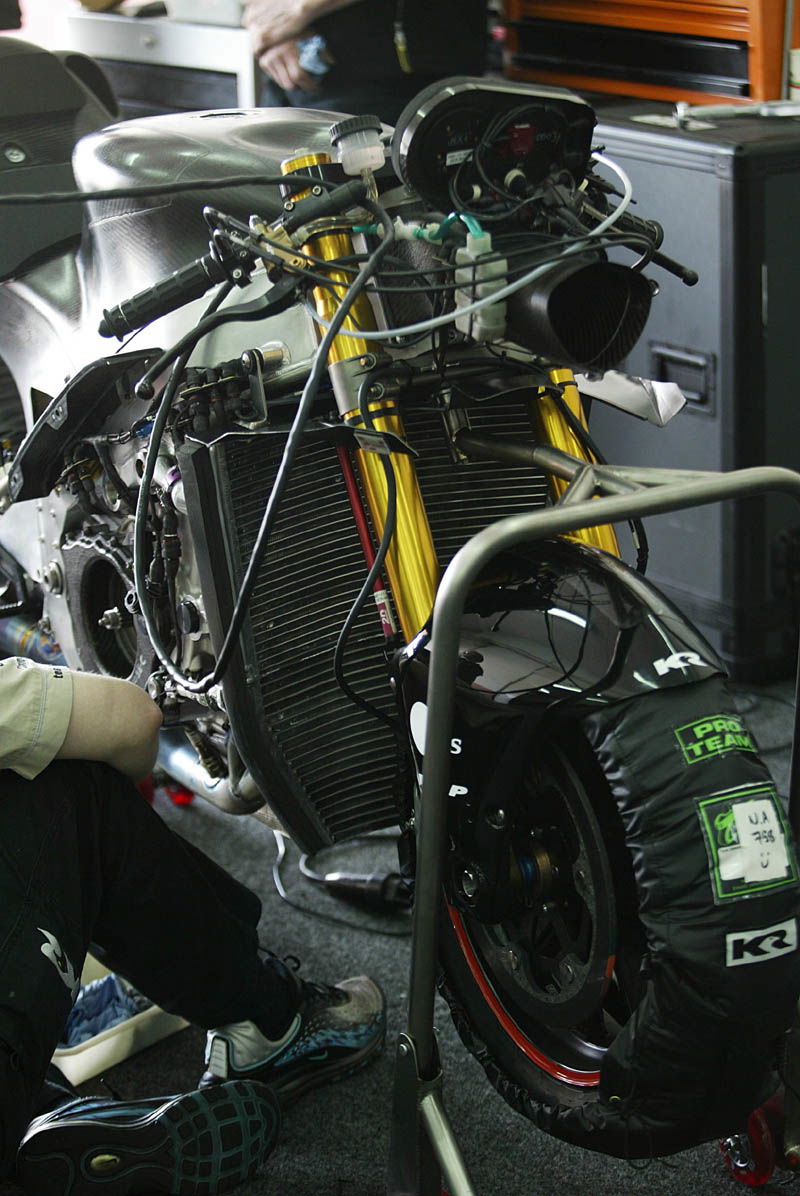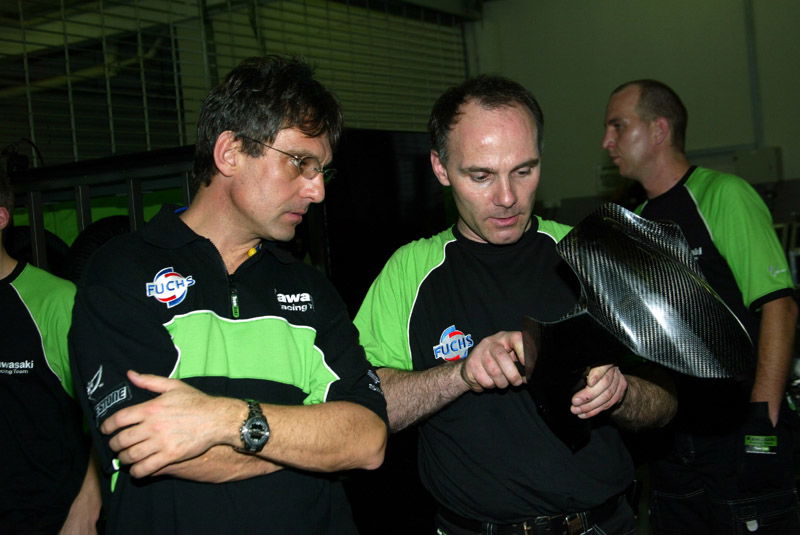Q&A: Shinya Nakano.
Shinya Nakano burst onto the grand prix scene in impressive fashion in 1999, racking up five podium finishes in his debut season to finish fourth in the 250cc world championship and secure the Rookie of the Year award.
The following year saw Nakano emerge as a real title contender and the likeable Japanese rider amassed five race wins and seven podium finishes - more than any other rider - but despite his consistency the championship title eluded him by a mere 0.014secs in the Phillip Island title decider between himself and Chesterfield Yamaha team-mate Olivier Jacque.

Shinya Nakano burst onto the grand prix scene in impressive fashion in 1999, racking up five podium finishes in his debut season to finish fourth in the 250cc world championship and secure the Rookie of the Year award.
The following year saw Nakano emerge as a real title contender and the likeable Japanese rider amassed five race wins and seven podium finishes - more than any other rider - but despite his consistency the championship title eluded him by a mere 0.014secs in the Phillip Island title decider between himself and Chesterfield Yamaha team-mate Olivier Jacque.
After stepping up to the 500cc world championship in 2001, Nakano got his season off to a flying start with an impressive fifth place finish in his home race at Suzuka. Nakano's first podium came at the German Grand Prix at Sachsenring and, once again, his consistency resulted in yet another Rookie of the Year award, along with a top five finish in the 500cc world championship.
Taking on the new four-strokes aboard his 500cc two-stroke machine proved a real challenge for Nakano in 2002, but a string of top ten finishes were enough to convince Yamaha team bosses to give the Japanese rider a factory four-stroke machine for the final three races of the season.
In 2003 Nakano switched teams, but stayed with the four-stroke machine he'd mastered at the end of the 2002 season. A string of consistent results - with two fifth place finishes at Mugello and Catalunya being the highlight - were enough to convince Kawasaki team manager, Harald Eckl, that Nakano was the man to continue the development of their Ninja ZX-RR MotoGP machine in 2004...
Q: A switch to Kawasaki for 2004 was obviously a major career move for you. How did it happen and what made you decide to make the switch?
Shinya Nakano: Harald Eckl spoke to me towards the end of last season, but at that time I wasn't sure what I was going to be doing in 2004. Then, at the final round at Valencia, Harald showed me the new version of the Kawasaki Ninja ZX-RR that the team would be testing after the race and I immediately saw this as an excellent project - and one to which I felt I could make a contribution. Harald told me about the big plans Kawasaki had for the coming season and the decision was easy - this was a factory team and I wanted to be a factory rider.
Q: What has been your impression of the Ninja ZX-RR after riding the bike at the pre-season tests in Malaysia and Phillip Island?
Shinya Nakano: Overall the bike is very consistent in all areas, with the power of the engine being particularly impressive, but there is also a lot of potential for further improvements. During testing both Alex Hofmann and myself have found many positive things about the components we've tried on the bike and, if we can bring the best mix of all these things together for the season, then I think that the bike will be very good. Most importantly we need to provide as much feedback as possible to the Kawasaki engineers in Japan, because with the right amount of information I think they can do a very good job for us; I certainly believe in them.
Q: Is part of the incentive of joining Kawasaki the technical challenge of a factory MotoGP project?
Shinya Nakano: Yes, definitely. It's very interesting for me to be involved in the development of the Ninja ZX-RR, as I have some experience with the Yamaha four-stroke and, with its inline four-cylinder configuration, the Kawasaki is a similar concept. For this reason I think I can make a contribution to the development of this new bike.
Q: In your opinion, which areas of the bike should be a priority for further development?
Shinya Nakano: Obviously a rider always wants more power, but liberating more power is not a problem with a 990cc engine. What we are missing at the moment is midrange acceleration. My target is to be able to open the throttle earlier and get more traction out of the corners, as well as having the throttle response necessary to use the full potential of the engine. We also need to continue work on the chassis to give us more traction at the rear.
Q: What are you goals for the coming season?
Shinya Nakano: Last year I finished tenth in the championship and my target is to better this in 2004 by finishing every race in the top ten. With our development programme I hope that by midseason we will have the potential for a top six finish, or perhaps even a podium at some races.
Q: Who do you see as your main rivals in the championship this year?
Shinya Nakano: For sure the Honda riders will be difficult to beat, but I'm hopeful we'll be able to fight it out with the Suzuki and Yamaha guys this season. But that doesn't mean the Honda riders are out of our reach, because I think our Bridgestone tyres could give us the opportunity to upset them at certain circuits this year.
Q: Bridgestone have increased their presence in MotoGP dramatically this season and the tyre competition is now very intense. What do you think about this tyre war?
Shinya Nakano: This is all good for MotoGP. All the tyre companies are working hard to give their riders an advantage, but I think Bridgestone definitely have the potential to start pushing for victory, much as they have done in Formula 1.
Q: Have you been following a particular training regime in preparation for the season ahead?
Shinya Nakano: In Japan I go two or three times a week to a physiotherapy centre and they teach me how to exercise properly. My house in Japan is in the countryside, not far from Narita Airport, so I also spend quite a lot of time on my Kawasaki KLX250 motocross bike, which is good for fitness. I'm also hoping to get a Supermotard bike soon, and this too will be used for training.
Q: Is there any significance to the #56 you traditionally race under?
Shinya Nakano: My favourite manga character as a kid was Gun Boy; a guy who starts racing while still at high school, wins the Suzuka Eight Hour, moves up to Grand Prix racing and finally wins the 500cc World Championship. I'm a big fan, so I chose the #56 as this was the number he always raced with.


